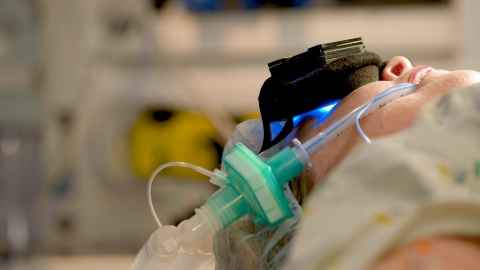Bees lead scientists to discovery about light
31 May 2019
Associate Professor Guy Warman and Dr James Cheeseman investigate light therapy with a difference.

We hear a lot of talk about blue light being bad – the light of our phones, TVs and computers in the evenings, but finally someone’s in the corner of Team Blue Light.
In ground-breaking research a team, led by Associate Professor Guy Warman and Dr James Cheeseman from the Department of Anaesthesiology, found blue-light therapy during anaesthesia helps patients get over the ‘jet lag’ effect of the anaesthetic and shortens their stay in hospital after surgery.
When people go under anaesthesia it can significantly distort their biological clocks. They lie unconscious for hours and may wake up thinking time hasn’t passed. Trials took place with kidney donors who were in good health before having the operation. The team used clock-shifting blue light on the donors during surgery, while some got a placebo red light. The patients wore goggles that emitted blue light flashes through their eyelids every 30 seconds.
Tests had been done on anaesthetised honey bees before the trials on 40 patients over several years. “We recorded rhythms in core body temperature, melatonin and sleep-wake timing,” says Guy. “Those given the red light were jetlagged after surgery, while those receiving the blue light suffered less jet lag and had a shorter stay in hospital. Blue light reduces the biological-clock disruption that occurs after anaesthesia and surgery.”
Guy says despite the bad rap blue light gets for night-time exposure, blue light in the morning is also “really good to keep your biological clock adjusted”.